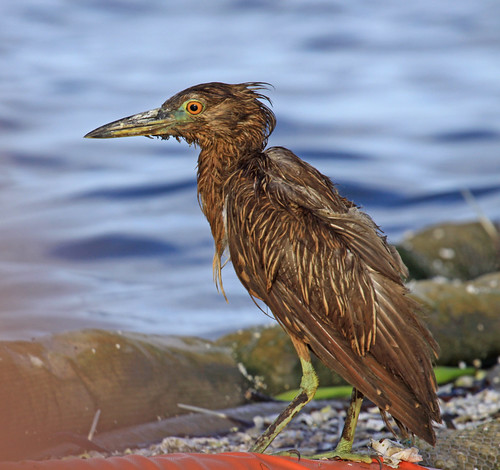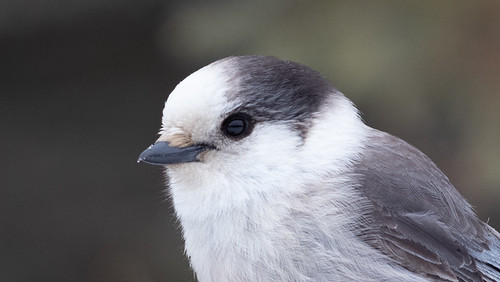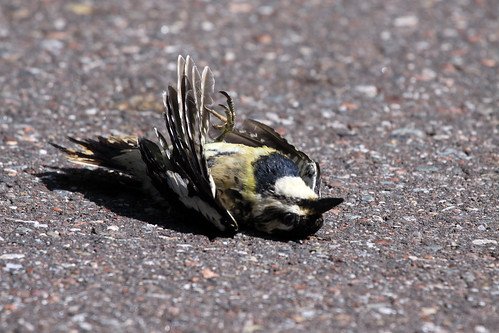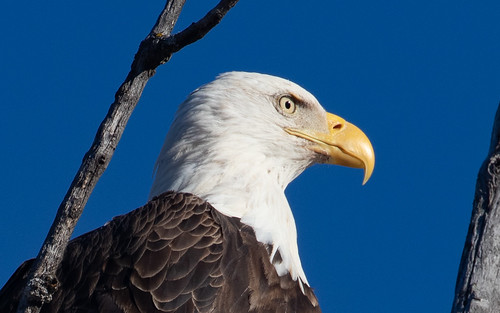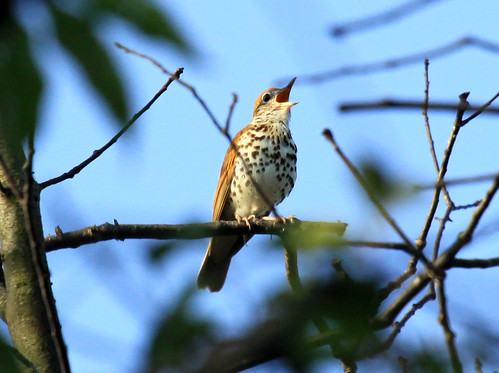A couple of weeks ago, in the final debate between Joe Biden and Donald Trump, when they were discussing climate change, Trump said that wind energy, and I quote, “kills all the birds.” That excessive hyperbole by a man known for excessive hyperbole may seem at least a little true: the U.S. Fish and Wildlife Service estimates the number of birds killed at land-based wind turbines to be between 140,000 and 500,000 each year. That's a big number, and the carcasses, often of large birds of prey, are, indeed, gruesome and dramatic.
But it's important to put bird deaths at turbines in context. Huge bird losses happen increasingly each year from climate change, what with increased storm, drought, flooding, and fire activity. Warmer winters are hurting Canada Jays where now their winter food caches suffer what biologists call hoard rot. Higher ocean temperatures contribute to the decrease in plankton and fish populations in northern waters, which has caused a catastrophic loss of seabirds.Those kinds of deaths are hard to quantify, but certainly outnumber deaths at wind turbines significantly.
Also, no one has ever been able to tease out the total number of birds killed every year directly or indirectly by our squandering of fossil fuels. That number is enormous—orders of magnitude more than the number killed at wind turbines, and almost certainly right up there and probably exceeding the number of annual deaths from domestic cat predation and window collisions, which each take out somewhere between half a billion and a billion birds every year.
How can our use of fossil fuels harm that incredible number of birds? Extracting it in the first place causes both direct mortality and loss of habitat. Mountain top strip mining for coal has devastated huge swaths of natural habitat. Oil pits kill an average of 750,000 birds every year, and up to 2 million birds died when they mistakenly landed in oil pits to bathe and drink in 1997 alone—pits that year took out four times as many birds as our highest estimates of birds killed at turbines.
The U.S. Fish and Wildlife Service website has estimated mortality figures per year for some other fossil fuel issues. Ten times as many birds are electrocuted at electric fences and transmission wires—5.6 million—as are killed by wind turbines. Collisions with power lines kill FIFTY TIMES as many birds as are killed at turbines—about 25.5 million birds every year. And more than four times that huge total, 214.5 million birds, are killed in collisions with motor vehicles every year. The vast majority of our cars, trucks, and other vehicles burn gasoline or diesel, but most electric vehicles are also powered by electricity produced by fossil fuels.
Just those specific estimates of the numbers of bird killed by fossil fuel use add up to a quarter of a BILLION birds per year. And there are no estimates of the number of birds affected annually by oil and gas spills. The National Oceanic and Atmospheric Administration notes:
Oil spills are more common than you might think, and they happen in many different ways. Thousands of oil spills occur in U.S. waters each year. Most of these spills are small, for example when oil spills while refueling a ship. But these spills can still cause damage, especially if they happen in sensitive environments, like beaches, mangroves, and wetlands.
Mercury pollution harms birds, particularly reducing successful breeding. Coal-burning power plants are the single largest source of mercury pollution, which comes down to earth in rainwater and poisons lakes, rivers, and streams. According to the U.S. Geological Survey, coal-fired utilities and industrial boilers contribute over 86 percent of the mercury in the atmosphere. Concern over mercury contamination in 40 states has led government agencies to warn consumers not to eat bass, trout, and other sport fish caught in over a thousand lakes and streams. Meanwhile, the blood and tissue mercury levels in loons, Osprey, Bald Eagles, and Belted Kingfishers are increasing—they’re functionally illiterate and so can't read those warnings.
And there are layers and layers of compounding issues. For example, it takes about 200,000 gallons of oil simply to start a coal burner. Diesel fuel is needed for extracting, transporting, and cleaning the coal, and then the ash must be transported to a landfill and buried. Our federal tax dollars subsidize coal companies and states with coal mines to clean up streams and repair roads, allowing corporations to make their profits without taking into account the real costs of coal production. Nobody has ever figured out the true economics of coal-produced electricity, much less the toll on birds.
Our dependence on oil has of course led to wars exacting such a horrific human toll that we don’t even consider the damage done to birds by bombs, land and water mines, bullets, defoliants, and other military technologies.
In addition to mercury, burning any fossil fuel, especially oil and coal, spews into the atmosphere nitrogen oxides, sulfur dioxide, and particulate matter, as well as the carbon dioxide implicated in global warming. Small amounts of toxic metals such as arsenic, cadmium, chromium, and nickel are also released. Major environmental issues related to these pollutants include smog (particulate matter and ground-level ozone) and acid rain. The latter affects the composition and growth of forests in the eastern United States and Canada, which in turn affects insect populations and thus insectivorous bird species. Acid rain also depletes the soil of calcium, reducing the amount available to the invertebrates that provide food for birds. This loss of calcium in birds’ diets causes eggshell thinning and less calcium in the bones of the nestlings of some species, such as the Wood Thrush.
A half-million bird deaths at wind turbines every year are indeed a tragedy, though Donald Trump, a real-estate developer whose projects and the habitat they've destroyed have taken out plenty of birds, hardly cares. His trumped-up claim that wind energy "kills all the birds," given in the service of the very fossil fuel industries who have killed so many more birds, would be horrifying enough even if he didn't say it right while California was ablaze and Louisiana dealing with its fifth named storm of the season.
Birds are the canaries in a coal mine, and their deaths have given us plenty of warning. It's time we listened.
